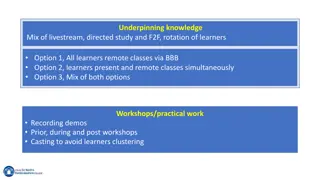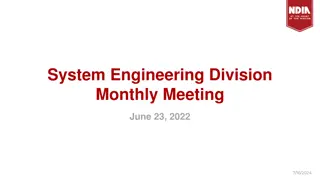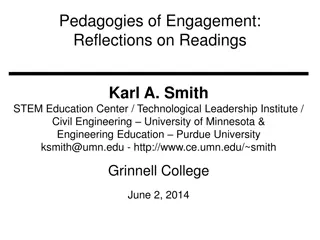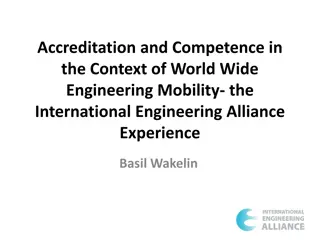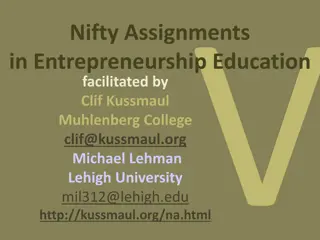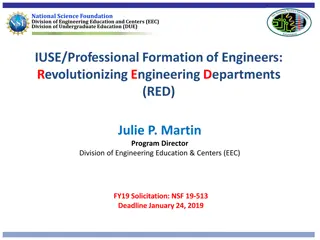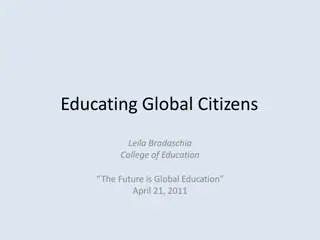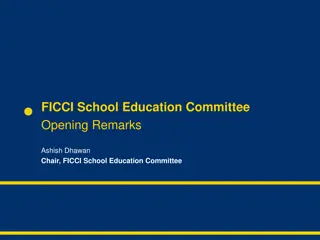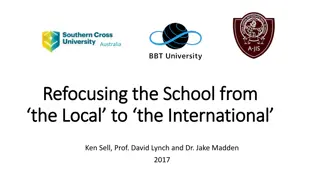Innovating Engineering Education: Integrating Global Learning Approaches
Exploring stimulating learning methods in engineering education to foster cross-disciplinary collaboration and global awareness. The project aims to connect university education with real-world contexts, nurturing T-shaped engineers who can effectively navigate diverse environments and integrate insights from external interactions. This initiative focuses on enhancing students' communication skills, promoting interactivity with external experts, and preparing them to consider broader contexts in designing technology solutions. The expected outcomes include improved diversity management, enhanced context-based learning, and evolving teaching practices to align with modern educational needs.
Download Presentation

Please find below an Image/Link to download the presentation.
The content on the website is provided AS IS for your information and personal use only. It may not be sold, licensed, or shared on other websites without obtaining consent from the author.If you encounter any issues during the download, it is possible that the publisher has removed the file from their server.
You are allowed to download the files provided on this website for personal or commercial use, subject to the condition that they are used lawfully. All files are the property of their respective owners.
The content on the website is provided AS IS for your information and personal use only. It may not be sold, licensed, or shared on other websites without obtaining consent from the author.
E N D
Presentation Transcript
ENGINEERS IN A GLOBAL CONTEXT INTEGRATING STIMULATING LEARNING APPROACHES IN A USE LEARNING LINE
WHO ARE WE? Johanna H ffken (Innovation Sciences -TIS); Annelies Bobelyn (Industrial Engineering ITEM); Madeleine Gibescu (Electrical Engineering); Masi Mohammadi (Built Environment)
AIM & JUSTIFICATION Our project aims to explore and implement stimulating learning approaches, which link and integrate university education with the broader context. Educate T-shaped engineers: students ability to communicate and collaborate not only across but also beyond their disciplinary and cultural boundaries. Student s ability to (inter)act with(in) a broader, transdisciplinary practice-context.
WHAT WE WILL DO Identify relevant approaches In which: university education is taken to the outside context visiting companies, societal organizations and/or government authorities working on assignments (co-)designed with external actors the outside context is brought inside the university Identify relevant forms of assessment Integrate insights in a USE learning line on globalization (Engineers in a global context)
EXPECTED OUTCOMES Students: can communicate and interact with experts from outside the university; Learn how to deal with diversity in practice understand the relevance to consider the context when designing technology solutions; account for/take up the insights gained through this context-exposure and interaction in their work/assignments. Higher engineering education: identify and underpin specific learning approaches of university-context education; Identify assessment forms reflect on changing roles and requirements of teachers aiming to apply these learning approaches in their education.
THANK YOU FOR YOUR ATTENTION
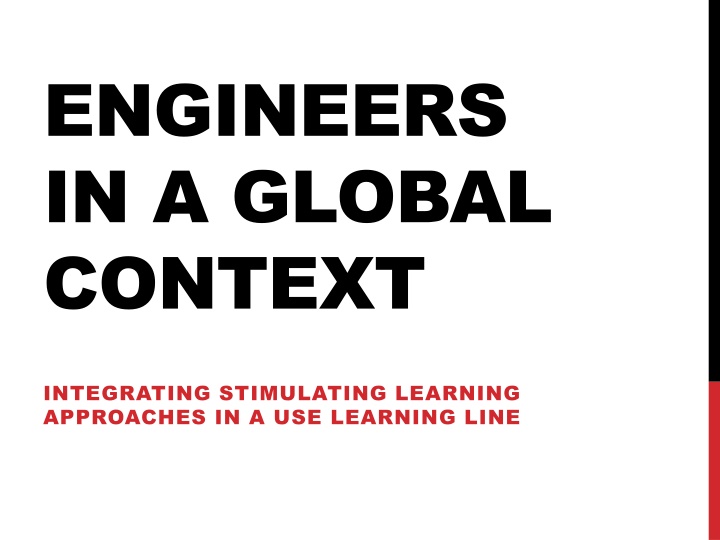

![get⚡[PDF]❤ Building Habitats on the Moon: Engineering Approaches to Lunar Settle](/thumb/21624/get-pdf-building-habitats-on-the-moon-engineering-approaches-to-lunar-settle.jpg)



